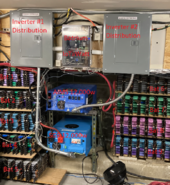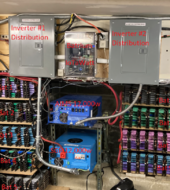schuh8
New Member
I am a beginner at DIY solar and am planning my first installation. All is going well but having trouble finding out one aspect of the installation. I was using an inverter 30 years ago on a live aboard boat and found it to be very unreliable. I know inverters have improved vastly since then but I still want increased reliability. So with that background ... here's the question.
Can I parallel the output of 2 inverters if inverter one is connected to half the panels and inverter two is connected to the other half. Panels will all be identical and neither of the two strings subject to shading? Right now the inverters I'm considering are the Growatt 6kw grid tie inverters (MIN 6000TL-X).
I realize in the event one inverter go's out I will only have half my rated capacity (but half is better than nothing ... right ?) Are there any serious cons to doing it this way ?
Thanks in advance
Can I parallel the output of 2 inverters if inverter one is connected to half the panels and inverter two is connected to the other half. Panels will all be identical and neither of the two strings subject to shading? Right now the inverters I'm considering are the Growatt 6kw grid tie inverters (MIN 6000TL-X).
I realize in the event one inverter go's out I will only have half my rated capacity (but half is better than nothing ... right ?) Are there any serious cons to doing it this way ?
Thanks in advance




